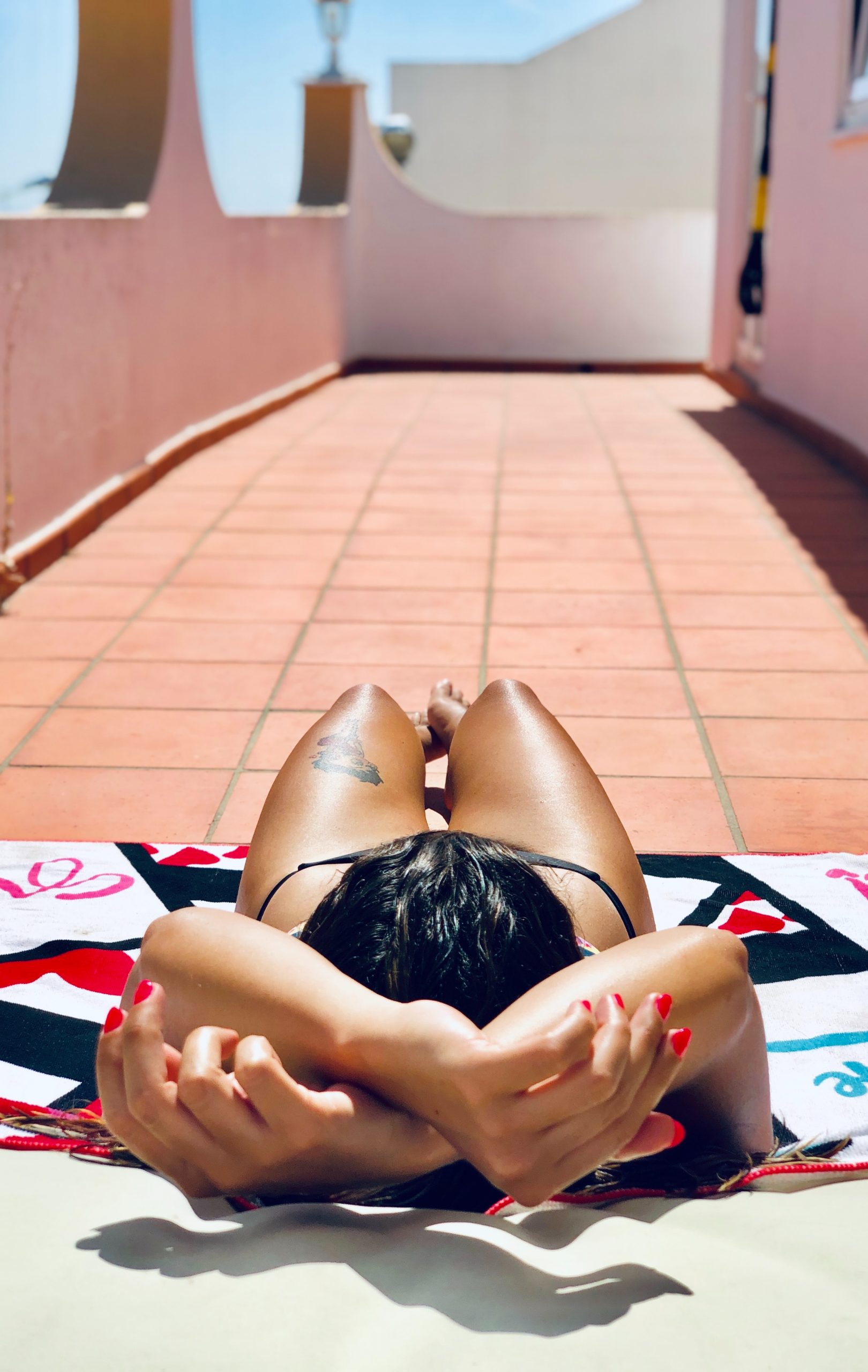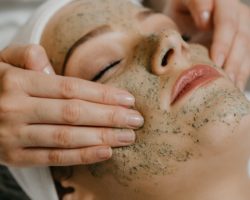How to get the desired tan while maintaining the beauty and health of your skin? Read the complete guide and get ready to sunbathe!

7 rules for a beautiful tan: a detailed guide that will not let you burn yourself
They say that the great Coco Chanel became the trendsetter for tanning. Returning from a Mediterranean cruise, she set out to showcase her luxurious bronze hue to the Parisians. And then, following the example of Mademoiselle Chanel, European women of fashion parted with wide-brimmed hats, fans and veils and began to expose their once aristocratic pale faces to the sun. Since then, the controversy around tanning has not subsided. Some say that ultraviolet rays are beneficial: they help the body produce vitamin D and dry out oily skin. Others warn of the dangers that lie in wait as a result of prolonged exposure to the sun – photoaging, problems with pigmentation and even cancer. But nevertheless, every summer on the streets of cities the lucky owners of a bronze skin tone, causing the envious glances of those who have not yet had time to go on vacation, do not diminish. So is it possible to get a beautiful tan without harming your health? Follow some simple guidelines.
1. Prepare for tanning in advance
Scientists have shown that sunlight promotes the production of vitamin D, which boosts immunity and mood. Well, in order for a tan to fall on the skin better, completely different vitamins are required. First of all, it is vitamin A. Its positive effect on the skin, including its pigmentation, has long been known. In the body, it always works in tandem with another equally useful vitamin E. In addition, vitamins C, E and A are powerful antioxidants that fight against free radicals produced in the skin under the influence of UV radiation. The action of these free radicals leads to premature aging, hyperpigmentation and skin cancer. Antioxidants are designed to counter these harmful effects. So, if you plan to tan to the maximum and without harm to your health, take these vitamins and include carrots, tomatoes, apricots, citrus fruits, seafood and spinach in your diet.
Carrot juice contains a large amount of beta-carotene, a pigment that, like melanin, is deposited in the skin and can give it a yellowish tinge. This way you can better prepare your skin for sun exposure. But keep in mind that beta-carotene deposition is not a tan.
2. Protect your skin even in the water
The water surface reflects the sun’s rays, which means that the chances of sunbathing near the pool and pond increase many times over. But along with this, the danger of getting sunburn increases. Sand, concrete and even snow also reflect more than half of the rays, which then penetrate the skin. Use waterproof protective equipment. Thanks to the special water-repellent components, these products will effectively protect the skin during bathing. Try not to stay in the water for a long time and reapply the product when going on land. After bathing, dry your skin thoroughly, as the water droplets remaining on it, like micro-magnifiers, intensify the sunlight, which can also cause burns and damage.
3. Pick up sunscreen
To reduce the negative effects of the sun on our skin, first of all, a strategic supply of high SPF cream is needed. SPF is the “sun protection factor”, which is calculated based on the minimum erythema dose, that is, the time of exposure to the sun, after which reddening occurs on the skin. Naturally, for each type and skin tone, such an indicator will be individual: for blondes and redheads, an SPF of at least 25-30 is needed, and for brunettes – 15-20. The closer to the equator, the higher SPF level should be chosen – 50-60.
Many owners of dark skin believe that they do not need sun protection at all, because their skin already has a dark shade, which means that they do not have the risk of getting burned. Indeed, by their very nature, their skin is better protected from group B rays (the very ones that cause burns). But from dangerous rays of group A and group C, provoking premature aging and cancer, a dark skin tone does not save, and you cannot do without SPF-factor agents.
When choosing a sunscreen, pay attention not only to your natural skin tone, but also consider how long you are going to be on the beach or outdoors. After all, the time of exposure to radiation also affects the level of required SPF protection. If you plan to spend an hour or two on the beach, then you should choose a product with a higher SPF level.
It is equally important to choose the right texture of the product. If you also use protective creams in winter, you may need to purchase a new tube in the summer. Winter remedies can be too heavy on the skin during the warmer months. For those with oily and acne-prone skin, consider switching to lighter, fat-free gels and fluids. When dry, you can use a cream that combines moisturizing and protective properties. Well, if you have sensitive skin, you should not choose products containing chemical sunscreen agents (substances that absorb light and come into contact with the skin). They are quite allergic and can cause irritation. In this case, it is best to protect the skin with a physical sunscreen that creates a reflective screen, or apply a physical protection under a “chemical”.
SPF should be applied to the skin 15-20 minutes before going outdoors. Do not forget to cover the shoulders under the straps of the swimsuit, ears and neck. Repeat the procedure every 2 hours, as the cream wears off on clothes and towels.
Protect your eyes with dark glasses, and wear a wide-brimmed hat or a scarf over your head to keep your hair safe.
After sunbathing, try not to eat immediately, especially fatty and spicy foods, since it will be very difficult for an overheated body to digest them.
Caring for specific areas of the body
There are areas on our skin that should be treated with extreme caution and, if possible, hidden from the sun. So, if you have a lot of moles on your body, you should be careful, because under the influence of UV rays, they can develop into a malignant tumor – melanoma. The presence of moles on the body, or nevi, as doctors call them, should not bother you, but you should periodically examine them for changes. There are several signs by which you can determine whether a mole is dangerous. If it changes its size, is unevenly colored or has an irregular shape, then before going to the beach, you better consult with a dermatologist and oncologist. To protect moles and age spots from UV rays, you must locally use sunscreen with a maximum protection index of SPF 50+ or a cream marked “Sunblock”. If these funds are not at hand, then an ordinary piece of plaster, cut in the shape of a mole, will help you.
Unlike nevi, the sun is unlikely to damage scars, but it will not work to change their color. After all, they consist of connective tissue, the fibers of which do not contain pigment cells. So, unfortunately, the scars will only become more noticeable against the background of tanned skin.
4. Go to rest to the right places
Sunscreen is far from a panacea for all the ills associated with prolonged exposure to radiation. It is equally important to choose the right place to stay. Go where it is warm, but solar activity has not yet reached its peak. Now we will tell you about the places to go when the borders are finally open.
For example, in May, the best vacation spot is Spain. The resorts of the Canary Islands are known all over the world, but Lanzarote stands out especially among them. The sun at this time of year is already quite hot, but not scalding. Remember that in the spring our skin should be protected especially carefully, because it has lost the habit of ultraviolet radiation over the winter. In June, you can go to Greece, the sea has already warmed up pretty well for swimming, but the sun is not yet strong enough to harm the skin. At the height of summer, it is better to choose a vacation spot away from the equator. Therefore, if you have the opportunity, in July you can go to Australia. It will be winter on the Green Continent, which has nothing in common with ours. For example, in Queensland at this time, the temperature is optimal for rest. In August, the climate in many seaside resorts is more welcoming than in the middle of summer. At this time, you can sunbathe perfectly in Montenegro or Croatia.
5. Watch your time in the sun
Many of us, getting to the sea, strive to spend as much time as possible on the beach or by the pool on the very first day. It seems that we have arrived for a very short time and will not have time to tan properly. Remember that the day after you take the sun bolt, you will most likely look like the leader of the Redskins. The skin cells, having received a certain dose of ultraviolet radiation, instruct the pigment cells to produce melanin, which protects the epidermis from damage. With constant exposure to the sun, the skin becomes thicker and the risk of burns is reduced. But such changes can only occur with residents of southern countries, whose faces are constantly in the sun and are accustomed to ultraviolet light. Imagine what will happen to a person who lives in a region dominated by cloudy weather. His skin, accustomed to the lack of UV radiation and not producing additional melanin, will suddenly receive too much radiation, which will cause a burn. Moderation and neatness should be our guiding principles in sunbathing to avoid problems. Indeed, it is not the radiation itself that is harmful to the skin, but its excess. So when you arrive south, start sunbathing gradually. On the first day, you should not be in direct sunlight for more than 10-15 minutes. With good tolerance, you can increase the time spent in the sun by 5-10 minutes every day. It is better to take a place in the southern sun in the morning – from 8 to 11 or in the afternoon – from 15-17.
6. Protect your skin from problems
Too intense exposure to sunlight on the skin can lead to the most unpleasant consequences: burns, acne, premature aging, the appearance of age spots, loss of collagen. It is better, of course, to protect yourself from such problems, but even after they appear, you should not panic.
Sunburn is familiar to anyone who lingers on the beach. This is a very unaesthetic redness of the skin, accompanied by pain, swelling, and sometimes even fever and blistering. A burn is a kind of skin defense reaction. With its help, the body signals that it is time to stop sunbathing for a while and use moisturizers and soothing agents. Cleansing “sun-weary” skin should be extremely gentle, not irritating.
Another problem that tanning lovers can face is acne. It would seem that in the sun, oily skin should dry out and become cleaner, but it’s not that simple. Under the influence of ultraviolet radiation, our skin goes into a defense mode, the immune cells responsible for health go out to fight ultraviolet light and often lose. Their recovery takes at least 10 days. During this time, your skin is completely defenseless – its natural immune system is not working. Therefore, a few days after sunbathing, you can find acne on your face and body. To avoid this, you need to use sunscreens that do not clog the pores, and in no case try to “dry” the rash either on the beach or in the solarium – this will cause an even stronger inflammatory process.
Intense UV light can cause hyperpigmentation. The color of the skin that we have is the result of the activity of melanocytes – cells that produce pigment. They are extremely sensitive to all changes in our body, and the sun’s rays are the main irritating factor for them. Therefore, try to use protective products with a high SPF. If age spots do appear, then you should hide from the sun, and also refrain from peeling or epilation. For your daily routine, focus on exfoliating and bleaching products that crush the pigment.
The opposite problem to hyperpigmentation is vitiligo, or hypopigmentation. With this disease, certain areas of the skin lose the ability to produce melanin and do not tan. Endocrine and nervous system problems can contribute to the appearance of vitiligo. People suffering from hypopigmentation should avoid sunbathing, because the areas devoid of pigment will only become more noticeable against the background of tanned skin.
7. Moisturize your skin after sunbathing
Unfortunately, the tan acquired in the south is washed off quickly enough. This is due to the fact that the skin is trying to get back to its normal state and exfoliate cells that are filled with melanin. Therefore, after sunbathing, additional moisture will also be required, because the skin is dehydrated from ultraviolet radiation. Use special cosmetics marked “after sun”. They are enriched with moisturizing and nourishing ingredients and antioxidants that eliminate the products of photochemical reactions. Moreover, by maintaining the required level of moisture in the skin, we prevent age-related changes, create conditions for its normal functioning and strengthen the immune properties.






